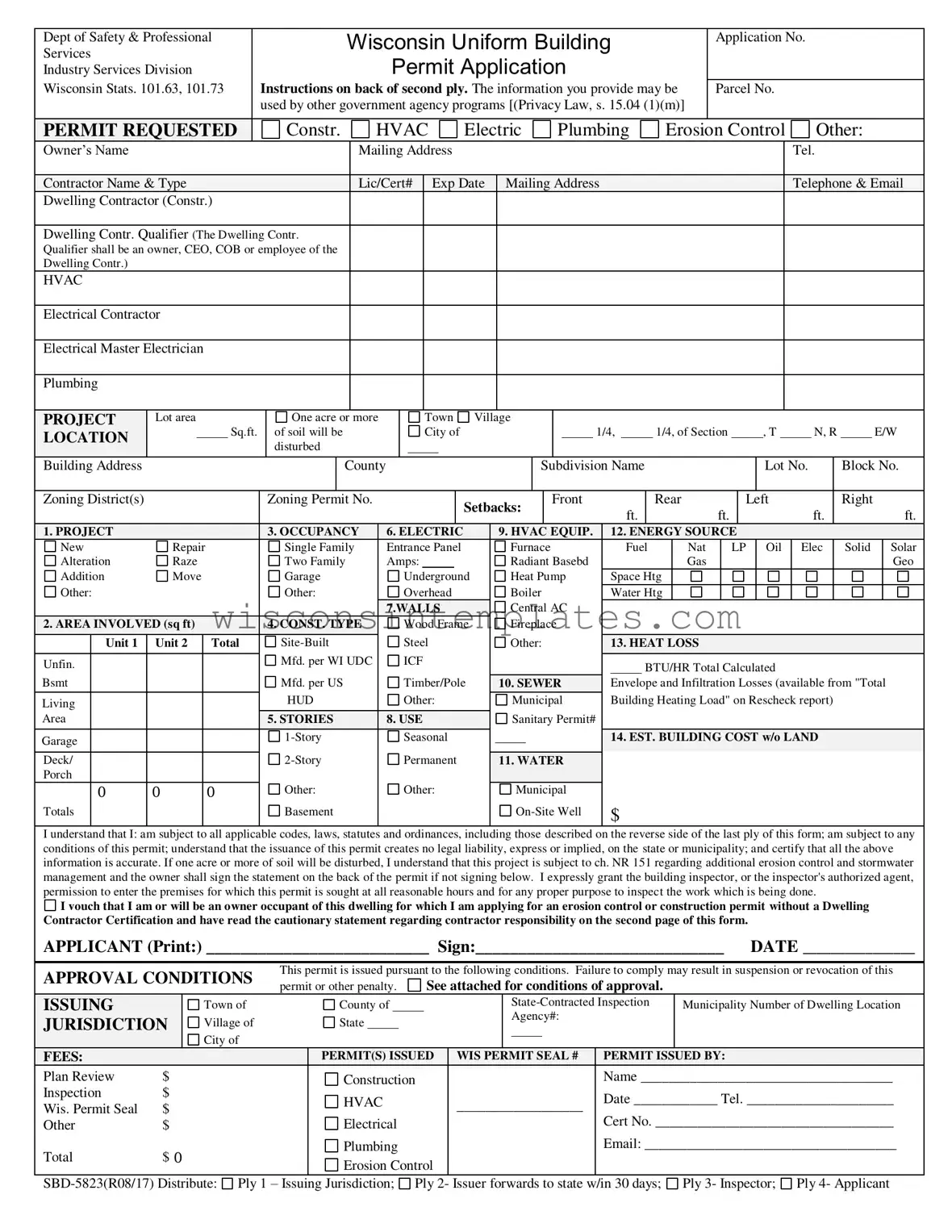The Wisconsin Building Permit form serves as a crucial document for individuals and contractors seeking to undertake construction projects within the state. This form includes essential sections that gather information about the project, such as the type of construction, occupancy details, and the area involved. Applicants must provide their name, mailing address, and contact information, along with details about the contractor and their qualifications. The form also requires specifics regarding the project location, including the building address, zoning district, and required setbacks. Notably, if the project will disturb one acre or more of soil, additional erosion control and stormwater management provisions apply, necessitating compliance with specific state regulations. The applicant must indicate the estimated building cost, type of construction, and various utilities involved, such as electrical and plumbing services. Furthermore, the form includes a section for the applicant's signature, affirming the accuracy of the provided information and understanding of applicable codes and laws. The issuing jurisdiction completes the final sections, confirming the permit's approval and any conditions that must be met. Overall, this form is instrumental in ensuring that construction projects adhere to local and state regulations, promoting safety and compliance throughout Wisconsin.
